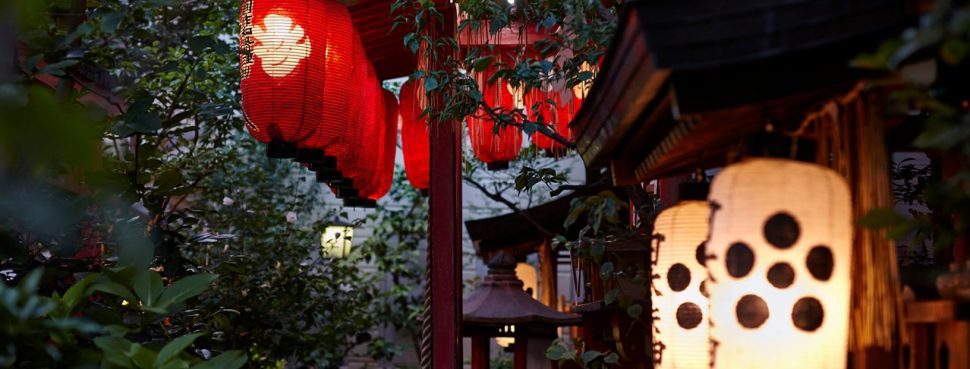From the steady dripping of raindrops in the rainy season, to the cicada in the summer heat, to the gurgling of spring streams from melting snow, Kyoto is filled with nature. Thanks to its history that dates back to AD 794, a discerning listener can also hear sounds that transcend the urban roar of modern times: Zen monks on their begging round, the clatter of looms in the weaving district, temple bells that boom at end of day, and these five unique sounds that encapsulate the city’s rich heritage.
A purifying echo
Japanese gardens boast few ornaments. A stone lantern or water basin is typical. More rare is the suikinkutsu, which adds an acoustic dimension. You place your ear against a bamboo pipe protruding from the ground, and for a moment you hear nothing but a profound silence. All of a sudden a harp-like sound reverberates as a drop of water falls onto water inside a pot buried underground. As the sound merges back into nothingness, a sense of calm succeeds it. Just as the stone basin holds water for physical cleansing, the sound of the suikinkutsu purifies the soul. It’s Japanese aesthetics at its most delicate, found only at a few temples, such as Enko-ji.
Image courtesy Hugo Kempeneer, a Kyoto based photographer. www.kyotodreamtrips.com
The whisking of ancient tea
The tea ceremony originated in China but took its present Japanese form under the influence of Zen in a ritual based on mindfulness. All is still, save for the graceful movement of the tea master, who mixes the ingredients with a bamboo whisk. Guests sit motionless on bent legs as the kettle builds up steam. The bitterness of the taste is offset by the accompaniments, a small sugary sweet and a cake typically made of red-bean paste. These reflect the season, as do the calligraphy, decoration and utensils used in the ceremony.
Enjoy a cup of Japanese tea, or take a tea ceremony lesson at Shakusui-tei, the tea house at Four Seasons Hotel Kyoto.
Four Seasons Hotel Kyoto
The rattle of gods
Videography courtesy Pond5/Christopher Bertucio
Kyoto is a city of never-ending festivals, supreme among which is the Gion Matsuri. It lasts the whole of July, and the high point is a grand parade of 32 floats. The religious heart of the festival involves three portable shrines containing the kami (gods), which are borne aloft to their “resting place” to preside over proceedings. The men who carry the heavy wooden palanquins shake them for the enjoyment of the kami, and the carriers encourage themselves with traditional calls and liberal amounts of sake, “drink of the gods.”
The creak of prosperity
Photography courtesy Pond5
Amid the abundance of nature in Kyoto’s river basin, bamboo groves stand out for their beauty. The grove in the Arashiyama district is particularly cherished for its vista of tall trunks and filtered sunlight. The wind rustling through the leaves makes a “zawa zawa” sound, while the creaking and groaning of the slender stems speak of the tree’s famed flexibility. With its ability to thrive in harsh conditions, bamboo not only serves as a symbol of prosperity, often featured on kimono, but also furnishes material for such local crafts as basketry, fencing and matting.
The strum of the geisha
Photography courtesy Pond5
Nothing encapsulates Kyoto like the figure of the geisha. The kimono, hairstyle, accessories and comportment are fashioned by centuries of refinement. The rigorous training includes dance and music, with particular attention to the kouta (little song), the lyrics of which concern drinking, transience and lost love. The songs are played on the three-stringed shamisen, which originated in China and was introduced to geisha in the 18th century. They can spend years mastering it.
Performances are exclusive and can be even more difficult for outsiders to gain access, however, they can be arranged. Talk to your Concierge at Four Seasons Hotel Kyoto or arrange your own here.






